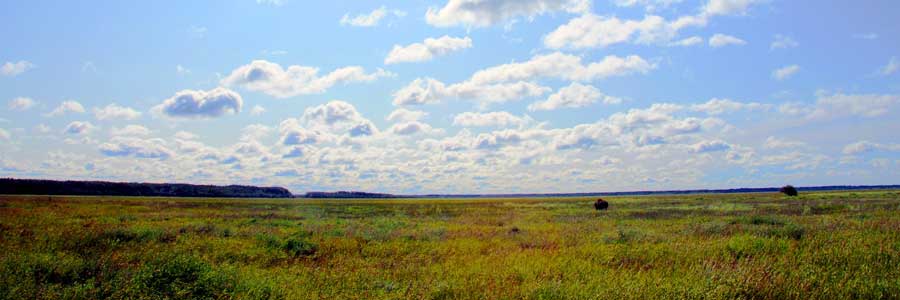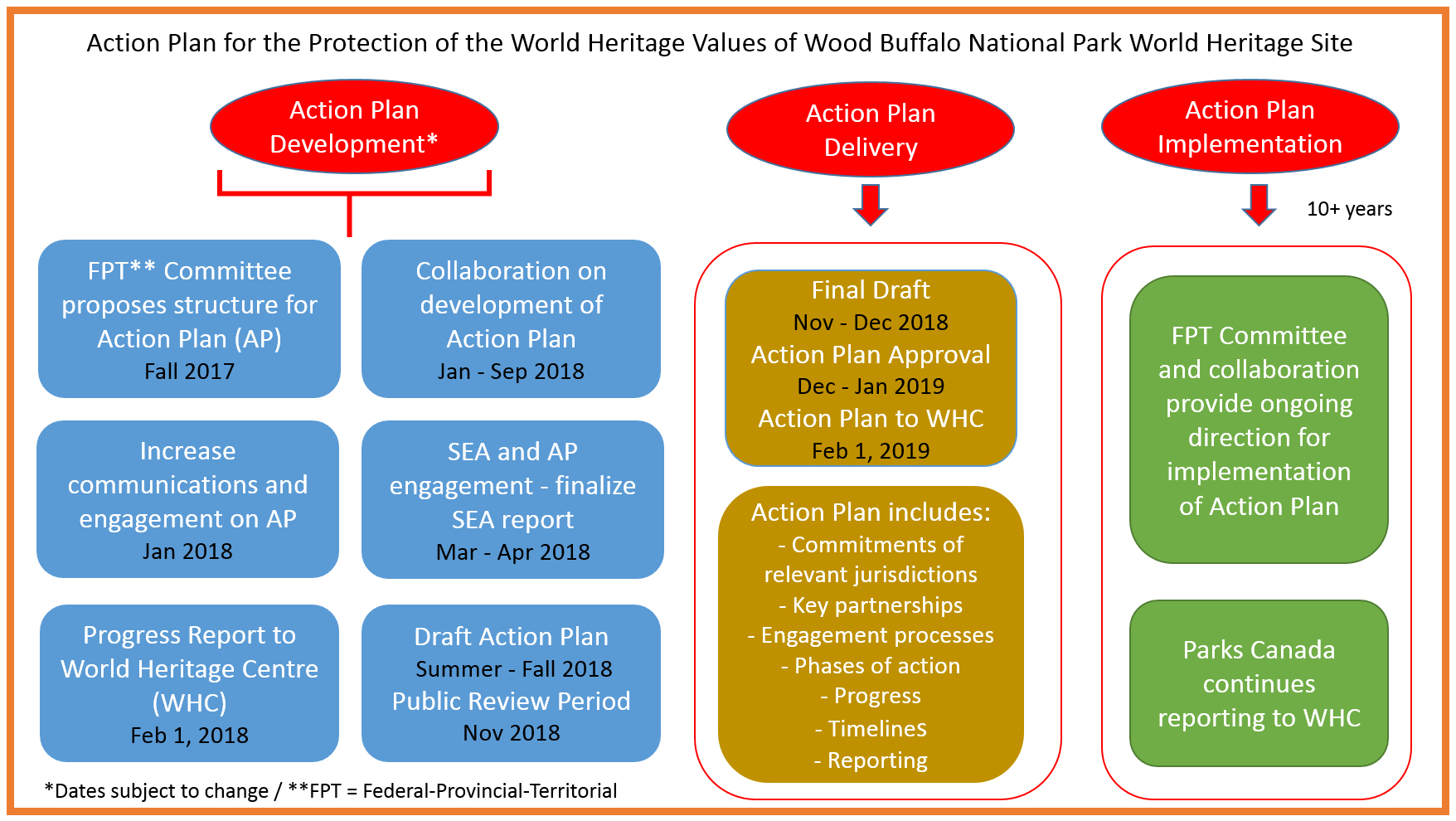
J.D.McKinnon
Indigenous and Stakeholder Involvement
Wood Buffalo National Park
Parks Canada and its federal, provincial and territorial government partners recognize that meaningful involvement of affected right-holders and stakeholders is critical to the development and implementation of the Action Plan.
Indigenous partners that work with Wood Buffalo National Park have been participating in working groups related to cooperative management and environmental flows and hydrology. In addition to their representation on these working groups, all 11 partners had face-to-face meetings with Parks Canada, including opportunities to meet bilaterally and as a group, to review an early draft of the Action Plan.
To support their ability to contribute to the development of the Action Plan, funding was made available to affected Indigenous groups, including several additional communities located south of Wood Buffalo National Park.
Organizations representing industry, conservation and regional stakeholders also received updates and were invited to comment on the draft Action Plan.
In mid-November 2018, in advance of a public comment period, the draft Action Plan was shared with over 40 Indigenous, industry, conservation and regional organizations.
The process for developing the Action Plan is outlined below.

Action Plan for the Protection of the World Heritage Values of Wood Buffalo National Park World Heritage Site - Text version
Action Plan Development
FPT Committee proposes structure for Action Plan (AP) Fall 2017
Progress Report to World Heritage Center (WHC) Feb 1, 2018
Collaboration on development of Action Plan
Apr 2018 – Jan 2019
Increase communications and engagement on AP
Jan 2018
SEA and AP engagement – finalize SEA report
Mar – May 2018
Comment Period on the Final Draft of the Action Plan
Nov – Dec 2018
Action Plan Delivery
Action Plan Approval
Jan 2019
Action Plan to WHC
Feb 1, 2019
Action Plan includes:
- Commitments of relevant jurisdiction
- Key partnerships
- Engagement processes
- Phrases of action
- Progress
- Timelines
- Reporting
Action Plan Implementation
10+ years
FPT Committee and collaboration provide ongoing direction for implementation of Action Plan
Parks Canada continues reporting to WHC
Feedback on the Draft Action Plan
Following collaboration with government and Indigenous partners on development of the draft Action Plan, the final draft was released for stakeholder and public review from November 19 to December 10, 2018.
In addition to comments submitted directly to Parks Canada, partners and stakeholders were also engaged in related processes led by other government partners, specific to thematic areas under their jurisdiction, such as meetings with the Government of Alberta related to the Lower Athabasca Regional Plan (LARP).
During development of the draft Action Plan, the public comment period, and meetings led by other jurisdictions, the following topics were raised by Indigenous partners, stakeholders and the public:
- The Peace-Athabasca Delta (the PAD) remained a strong focus of the Action Plan. The Environmental Flows and Hydrology Working Group identified several management approaches to address water quantity issues in the PAD, including physical works to manage water levels, and a process to enable strategic release of water from the W.A.C. Bennett Dam to influence an ice jam event within WBNP and encourage flooding in the PAD.
- Related to improved governance of the park, Indigenous partners and Parks Canada identified some ongoing challenges, which they continue to work on together. However, agreement was reached on several issues for priority action, including Indigenous participation in processes related to staffing, procurement and the development of training programs for WBNP staff.
- Some conservation organizations and Indigenous groups continued to raise concerns about the Site C hydroelectric development that was assessed and approved prior to the requests from the World Heritage Committee. The environmental assessment resulted in specific, legally-binding conditions for the development of the project. Those federal and provincial conditions are monitored by both the Canadian Environmental Assessment Agency and BC Environmental Assessment Agency, respectively.
- The establishment of a “buffer zone” consisting of conservation areas adjacent to the WBNP was another theme of interest to many parties, with significant new protected areas announced by the Province of Alberta during development of the Action Plan.
- Concerns were raised about the use of some existing provincial land-use management frameworks to protect the site’s world heritage values, resulting in additional adjustments to the Action Plan and commitments related to the management frameworks.
- The need for improved coordination of monitoring programs and knowledge sharing (including the involvement of affected Indigenous communities, governments, industry and other stakeholders) continued to be raised, and helped shape related action items.
Parks Canada and its partners are appreciative of all those who provided comment on the draft Action Plan.
Action Plan Implementation
As the Action Plan is implemented, Parks Canada will continue to coordinate collaboration between federal, provincial and territorial governments (each of which have specific responsibilities for action within their jurisdiction and authority) and with Indigenous governments that have stewardship responsibilities for their traditional territories. Other affected stakeholders will also be engaged in specific aspects of plan implementation.
- Date modified :